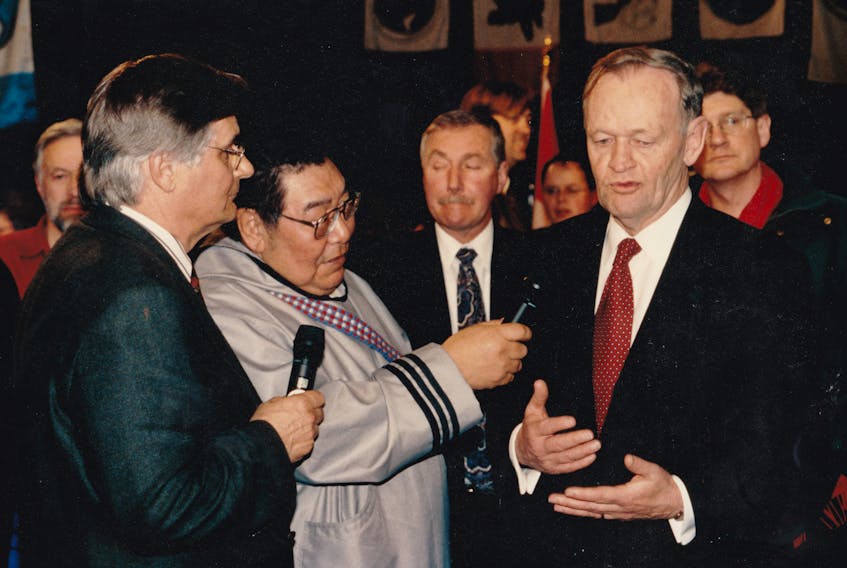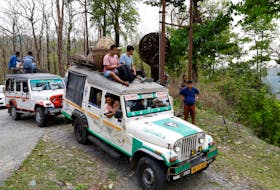NEW GLASGOW, N.S.
Whit Fraser and his algebra teacher were not of the same mind – and that’s a large part of the reason Fraser ended up as a journalist.
“It was kind of a serendipitous start,” says Fraser, who was born in Merigomish and went to school in Stellarton. “He didn’t think my cluttered mind should be in his class.”
And, so, Fraser found himself standing outside of the school, fearing going home and facing his mother as a dropout. He opted instead to go job hunting.
“I figured if I could come home with a job, I had a chance of survival,” he said.
He entered local radio station CKEC and talked to the owner. He asked for a job in the print shop, but the owner told him that there were no openings there and instead put a page of Time magazine in his hand and asked him to read it. He recorded the teen’s voice and liked what he heard.
Fraser left with a part-time job, marking the start of a lifelong career in broadcasting. He spent most of his time in northern Canada, seeing the region in a way that few people have the chance to do.
New book
This month, Fraser released his book, True North Rising, which he wrote for several reasons.
“There’s some incredibly good stories that need to be told for the first time, or retold.”
Fraser said the book has three main sections: his own entrance into journalism and his early years of discovery in the north; the second is what he classifies as the turbulent years when radical young aboriginal leaders began standing up for their rights; and the third part deals with what he calls the builders and includes profiles of people Fraser met and now considers friends.
These individuals became significant players in the history of the north, he added. He points to John Amagoalik as one example. Amagoalik was a child when his family was relocated from Northern Quebec to Resolute Bay because the government needed people living on Cornwallis Island.
“They were never equipped for that winter,” Fraser said.
The hardships Amagoalik suffered had a profound influence, prompting him to grow up to play an instrumental role in the creation of the new territory of Nunavut, thus changing the map of Canada.
Fraser also tells the story of Stephen Kakfwi, who lived in the MacKenzie Valley. As a child, Kakfwi was sexually abused by one of the supervisors in a Catholic school. Fraser recounts in his book how Kakfi twice negotiated to have the Pope come to his community, not giving up after the first visit fell through. He would later go on to become premier of the Northwest Territories.
Fraser hopes the stories he’s written will give people in the rest of Canada a fresh perspective of the north.
“There are so many differences but there are so many similarities, too,” he said. “We all laugh about the same things and we all care about the same things.”
Want to purchase it?
Whit Fraser’s book is available online at Burnstown Publishing for $30. Fraser said he expects it will be available on Amazon in the future as well.









